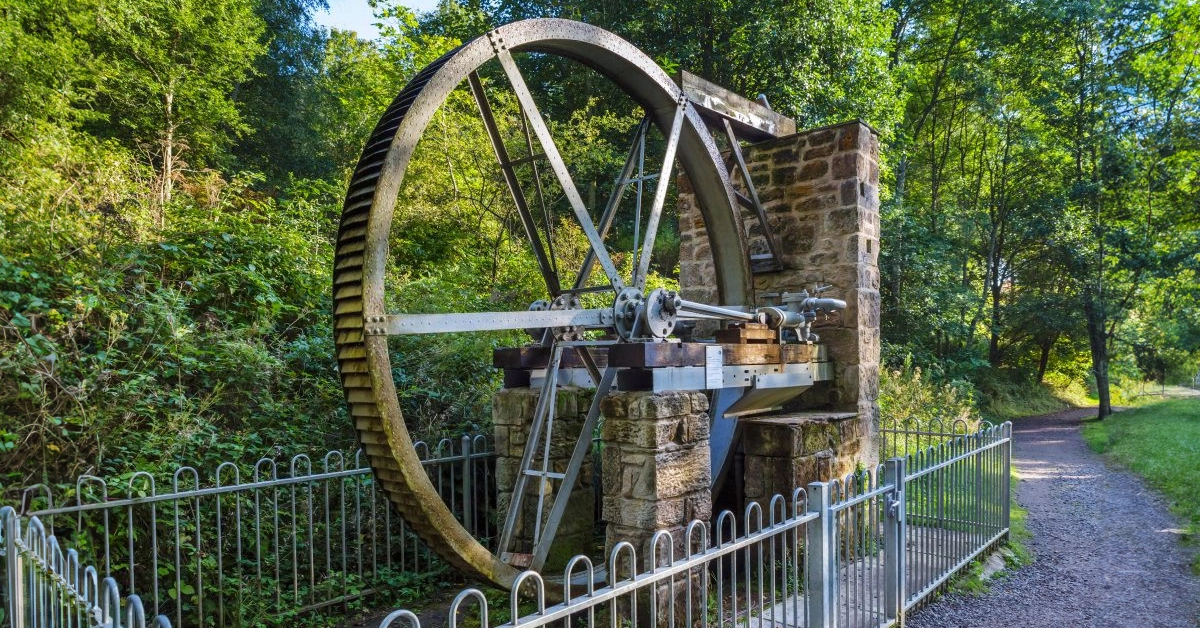
The earliest known version of the water wheel comes from mid-4th century BC Mesopotamia, a horizontal, propeller-like contraption that was used to turn millstones for grinding flour. It proved to be effective and the design was caught on in southern Europe and China.
The basic mechanism of the water wheel spread across much of the Old World (Eurasia and Africa) and took on several different forms, but the core concept remained the same. As the water mill was refined further, its energy efficiency rose.
First steps towards water turbines
During the mid-18th century, the French hydraulic and military engineer Bernard Forest de Bélidor wrote Architecture Hydraulique, a four-volume work describing vertical- and horizontal-axis machines. Understanding hydraulics was essential to the development of modern hydroelectricity because when the electrical generator was developed in the late 19th century, it could be coupled with hydraulics to generate hydroelectricity.
Roughly around the same time, the Hungarian inventor and engineer Johann Segner developed his version of the reactive water turbine, also known as the Segner wheel. The Segner wheel had a vertical axis and makes use of hydrostatic pressure to eject water from a nozzle, creating a rotational force. In many ways it served as a prototype for modern water turbines.
Breakthrough improvements during the Industrial Revolution
The Industrial Revolution speeded up the evolution towards hydroelectric power as water mills were gradually converted into water turbines. By the mid-19th century, research into turbines led to energy efficiencies of above 75 % (compared to the earliest water wheels, which were only 20 % efficient).
In 1848, James B. Francis improved the design of the water turbine and achieved 90 % efficiency. His high-efficiency turbines could match the unique flow conditions of individual bodies of water. To this day, it remains to be the most widely utilized turbine in operation.

The first electric generator
Between 1831 and 1832, Michael Faraday developed the first electric generator. Although the device, named the Faraday disk, was actually inefficient as a generator, it marked an important step in the development of electric energy. The concept behind electric generators underwent experimentation, adjustments and refinement throughout the 19th century, culminating in the invention of the modern direct current dynamo in the winter of 1866/1867.
1878 marked the year when hydroelectric power was first used for a practical purpose. In the village of Cragside in Northumberland, England, William Armstrong used water from a lake by his house to power a Siemens dynamo that created electric energy for a single arc lamp in his art gallery.

In 1880, a water turbine was used to provide lighting for a theatre and a storefront in Grand Rapids, Michigan, and in 1881 a water turbine used in a flour mill began providing street lighting at Niagara Falls, New York.
Establishment of the first hydroelectric power plant
With the advent of electric lighting, there was a new demand to create centralized electric power stations. Thomas Edison built the world’s first electric plant in the U.S. state of New York, unveiling it on the 4th of September 1882. Just a few weeks later, on September 30th, 1882, the world's first hydroelectric power plant began operation on the Fox River in Appleton, Wisconsin. The hydroelectric plant was built by Appleton paper manufacturer H.J. Rogers and it would later be named the Appleton Edison Light Company.

At first, the Fox River station could muster just enough energy to power itself, a nearby building and the house of H.J. Rogers. However, improvements and expansion would later see the station provide a plentiful source of electric energy for the town of Appleton.
Towards the end of the 19th century, hydroelectric power emerged as the preferred source of electric energy in the U.S., as the country had plenty of rivers and hydroelectricity was cheap and reliable. The rest of the world soon caught up and by 1900, hundreds of small hydropower plants were in operation spread across Europe, Asia, Australia and South America. In China, in 1905, a 500 kW hydroelectric station was built on the Xindian creek near Taipei.
In our next article on hydroelectricity, we will cover the history of hydropower from the 20th century up until the latest developments of this type of renewable energy.
Are you ready to be part of the renewable energy revolution? Contact us today! Our experts are here to help you find a tailor-made solution to your needs.
New dimension of energy optimization





